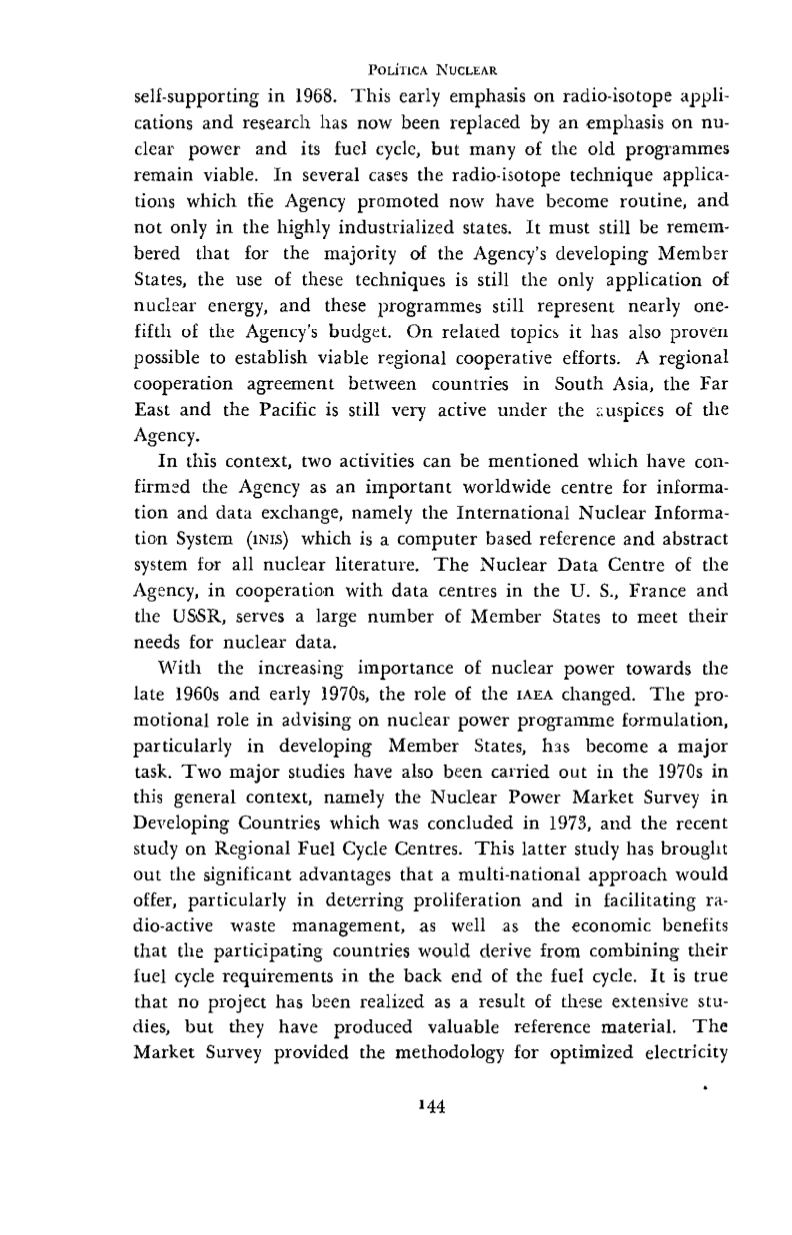
POLínCA NUCLEAR
self-supporting in 1968. This early emphasis on radio-iso tope appli–
cations and research has now been replaced by an emphasis on nu–
clear power and its fuel cycle, but many of the old programmes
remain viable. In severaI cases the radio-isotope technique applica–
tions which die Agency pramoted now have become routine, and
not onIy in the highIy industrialized states.
It
must stilI be remem·
bered that for the majority of the Agency's developing Member
States, the use of these techniques is still the only application of
nuclear energy, and these programmes still represent nearly one·
fifth of the Agency's budget. Gn related
topic~
it
has also proven
possible to establish viable regional cooperative eHorts. A regional
cooperation agreement between countries in South Asia, the Far
East and the Pacific is still very active under the ,; uspices of the
Agency.
In this context, two activíties can be mentioned which have con·
firmed the Agency as an important worldwide centre for informa·
tíon and data exchange, namely the International Nuclear Informa–
tian System
(lNIS)
which is a computer based reference and abstract
system for all nuclear literatme. The Nuclear Data Centre of the
Agency, in cooperatían with data centres in the
U.
S., France and
the USSR, serves a large number of Member States to meet their
needs for nuclear data.
\¡Vith the increasing importance of nuclear power towards the
late 1960s and early 1970s, the role of the
IAEA
changed. The pro–
motional role in advising on nuclear power programme formulation,
particularly in developing Member States, h1S become a major
task. Two major studies have also been carried out in the 1970s in
this general context, namely the Nuclear Power Market Survey in
Developing Countries which was concluded in 1973, and the recent
study on Regional FueI Cycle Centres. This latter study has brought
out the significant advantages that a multi-national approach wouId
offer, particularly in deterring proliferatíon and in facilitating ra–
dio-active waste management, as wellas the economic benefits
that the participating countries wüuId derive from combining their
fuel cycle requirements in the back end of the fuel cycle. It is true
rhat no project has been realized as a result of these extensive stu·
dies, but tI1ey have produced valuable reference materiaL The
Market Survey provided the methodology for optimized e1ectricity
144


